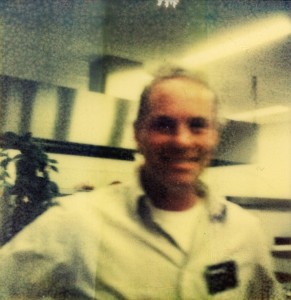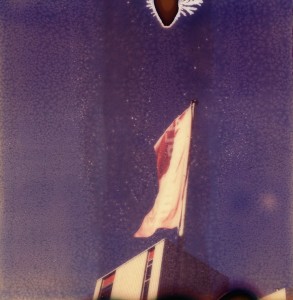The Future of Impossible

When we got back to the canteen, Andre told us more about the future of Impossible. There’s the Impossible Camera for example.
In the first stage it’ll be a relatively easy to use model made from a mixture of plastic and metal components. The guy who’s designed the lenses on the digital Leica models (aka Panasonic Lumix) is in charge of the design – sadly I forgot his name.
Then later the idea is to launch a more professional model with more settings and probably a higher price tag. Either launch date or price are yet to be confirmed – they’re currently working on it.
Either camera will have an integrated battery so there will be a special edition film available without the battery in the pack, which means there may be more room for extra pictures in the pack, or the pack will be cheaper. There are no details on either price or release date just yet.
One question I was dying to ask:
Why are there only 8 instead of 10 pictures in an Impossible film pack?
The answer from both Kees and Andre was that the Impossible developer paste is a bit thicker, or they need more in the pods than Polaroid used to need. This means that only a maximum of 9 pictures would fit into each film pack – but because “9 is a stupid number” they decided to use 8.
Impossible know their market too: they’re not competing with digital photography, but like vinyl it’s an addition to their customers portfolio. People seem to like the artistic look fo these experimental images, but some customers demand more.
Police Bomb Squads for example, says Andre, like the idea of going back to analogue instant pictures for security reasons. They’re terrified of some electronic gadget setting off a detonation they were meant to diffuse. Those customers wouldn’t want an artistic representation of a subject though, but rather a “real” image like Polaroid used to be.

Andre hinted at two possible future versions of the Impossible film: the current “artistic” range (PX 70, PX 680, PX 600) and a “cleaner” version that looks more like a proper print without the charming imperfections.
On that note, we left the factory through the “outlet store” – a small table with two workers and a vitrine filled with cameras for purchase. I got my hands on some very cheap PX 680 which had a small line at the bottom of each picture which merely adds a touch of charme to my output. I would have bought more if there had been more.
Conclusion
My friend Oliver summed it up so well: The Impossible Project was extremely inspiring to him, even though he’s not into quirky photography.
He picked up on what cannot be seen in the product they make here in Enschede: something that can’t be described in chemicals, mechanics or units. It’s more metaphysical: The Mission to create an analogue flawed product for a camera that isn’t being built anymore. The Mission to make it happen.
They’re making something other than just film material here. Something wonderful and inspiring. They’re keeping Edwin Land’s crazy dream of instant photography alive.
I’m so grateful for a peek inside The Impossible Factory and can’t wait to take the next Impossible Picture 😉
Check out this Flickr Set for all the pictures I’ve taken on that day.
i just stumbled upon your write up! Thanks for sharing yor experience at the impossible factory with us (and congratulations on winning that gold sx-70).